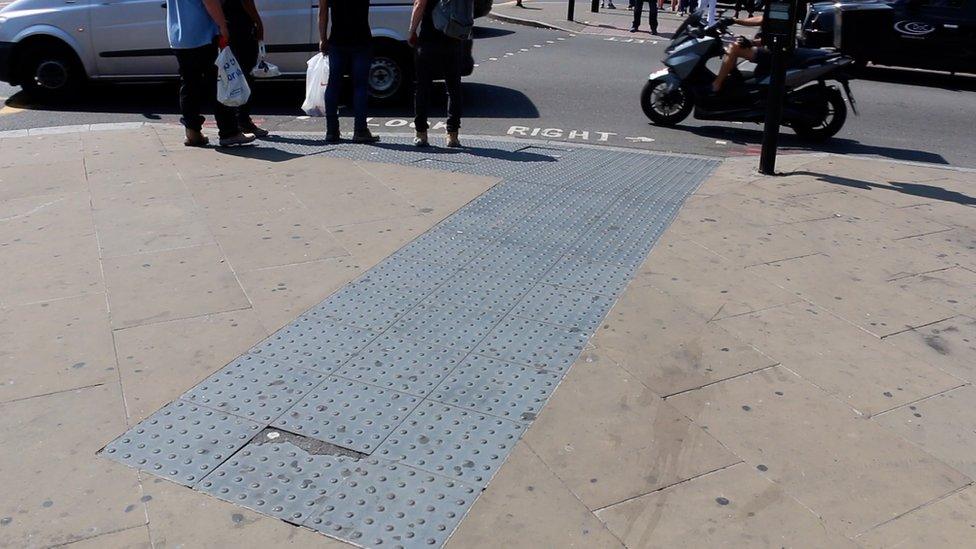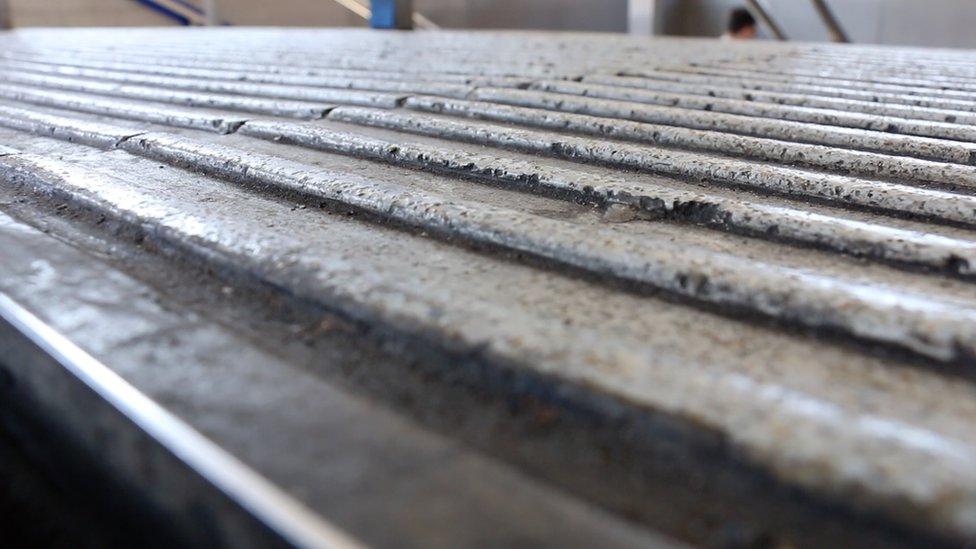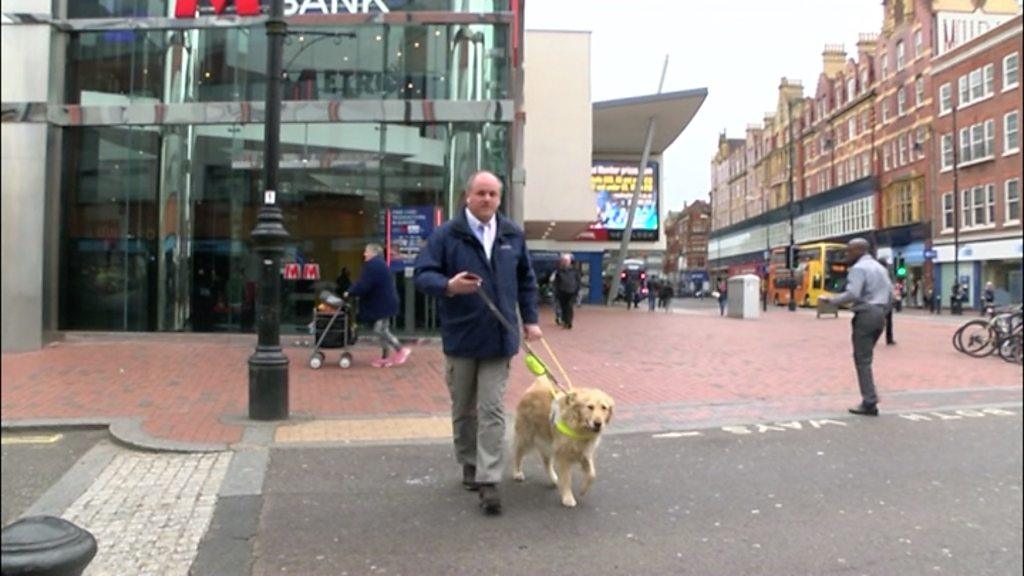Tactile paving: The secret code that helps me get around
- Published
The seemingly random bumps and grooves on pavements? They matter
Imagine walking down a busy street when you can only see a few steps ahead of you.
To deal with the challenges of my daily commute, I rely on something you probably never even noticed before.
Like most visually impaired people, I have some useful vision. On a good day it's up to a couple of metres in front of me.
It's like being in a bubble. Beyond the bubble life is blurry, wobbly, a mix of shapes and colours.

Amy Kavanagh says tactile paving gives her "so much information"
On a bad day - when it's very sunny, I'm tired or stressed - my bubble shrinks. I can't read my phone or see a traffic light, sometimes everything is just a blur.
I was born visually impaired so I've always navigated the world differently. Instead of relying on my vision I use my hearing, sense of smell, and touch, but also my memory.
However, last year, I was finding my commute to work too difficult on my own. Several bad falls, near misses, and grumpy passengers really knocked me and my confidence.

Tactile paving is commonplace but have you ever noticed the subtle differences in how it looks (and feels)?
So I reached out to Guide Dogs, who gave me loads of training and taught me how to best use my new long white cane to make my journey to work safer and easier.
Using a long white cane gives me independence. It helps me protect my bubble! The cane helps me have the space and time to make decisions.
It feels the edges of steps, kerbs or uneven surfaces that I can't see. So now I fall over a lot less. It also makes it easier to ask for help when I need it.

Amy regularly tweets about her experiences as a visually impaired Londoner
As a new cane user, one of the most important lessons was how to use tactile pavements. Those bumps, lumps and stripes give me so much information, especially on days when my vision is more limited.
Tactile paving is particularly useful at road crossings. The bumpy blister paving not only tells me that there is a road crossing, but what kind of crossing to expect.
Similarly the stripy corduroy tactiles tell me when a set of stairs is going to start and stop, meaning I can then use my cane to feel my way up or down.

Corduroy tactile paving is used to show the top and bottom of flights of stairs
The best thing about tactile paving is that it gives me clues about my environment on an unfamiliar route.
It tells me when to be aware of potential hazards, like platform edges or cycle lanes. Without it, I take a lot longer to find my way, and often rely more on someone else to help me.
Most people don't even notice these simple bumps on the pavement, but they are so important to the over 2 million people with sight loss in the UK.
Whether we are feeling them with our feet or a cane, tactile pavements give us the confidence to travel safely and independently.
Follow Newsbeat on Instagram, external, Facebook, external and Twitter, external.
Listen to Newsbeat live at 12:45 and 17:45 every weekday on BBC Radio 1 and 1Xtra - if you miss us you can listen back here.
- Published8 March 2018

- Published27 April 2018

- Published7 June 2018

- Published31 August 2016
